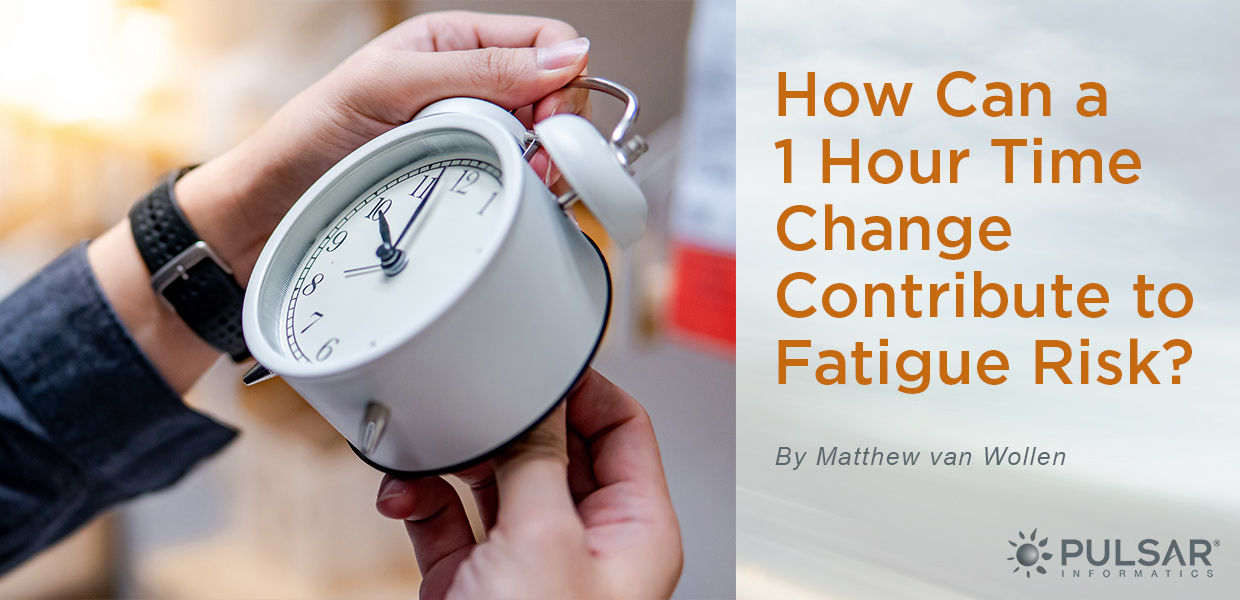
How Can a 1 Hour Time Change Contribute to Fatigue Risk?
The twice-yearly ritual of daylight savings time is upon us yet again this weekend. Yawn.
Aside from the mild inconvenience of changing the clocks in your car and in your house (if you have any analog clocks left, that is), you probably don’t give the time change a second thought. A bit more sleep in the fall, a bit less sleep next spring. Over the course of a year it’s a wash.
Or is it? Scientists have studied the impact of daylight savings time changes on our sleep, and found that changing the clock increases worker fatigue and puts worker safety and health at risk. The issue is the impact on our circadian rhythm, which governs our alertness levels as well as many other biological systems.
According to one study that used advanced sensors to track workplace safety, one hour of lost sleep is significant for individuals, but the impact on employers—a reduction in work output or general presenteeism—is hard to detect.
“Being aware of the problem is the first step,” says Daniel Mollicone, CEO of Pulsar Informatics. “And once safety managers start to take a harder look at the impact of daylight savings changes, they quickly realize that the same fatigue stressors are present in the schedule at multiple points during the year. Every time an employee rotates from a day shift to a night shift, or travels across time zones, circadian disruption occurs.”
So how can you remain vigilant and watch for the subtle warning signs of fatigue in your workforce? What are the best ways to manage fatigue risk?
First, as an employer it is your responsibility to provide workers with schedules that allow them to obtain adequate sleep during their time off. This may be straightforward during routine operations, but may become challenging in industries that experience seasonal swells in business or have intense periods of operations following major weather events, for example.
Next, it is helpful to know in advance where fatigue risk may be present in the schedule. Tools such as Fatigue Meter from Pulsar Informatics accomplish this by using scientifically validated biomathematical models to predict sleep and fatigue levels several days forward, using only worker schedules as the input.
A third way to monitor fatigue risk is to measure it directly, using both objective measures such as the Psychomotor Vigilance Test and subjective measures; e.g. “On a scale of 1 to 7, how sleepy are you feeling right now?” These can be implemented easily and effectively using PVT WorkFit or the Fatigue Meter Mobile App, available for both Apple iPad and iPhone.
If you are ready to consider implementing a fatigue risk management system in your business, call us today to find out more. But do it today, before the extra hour tacked on to your schedule next week throws you off…